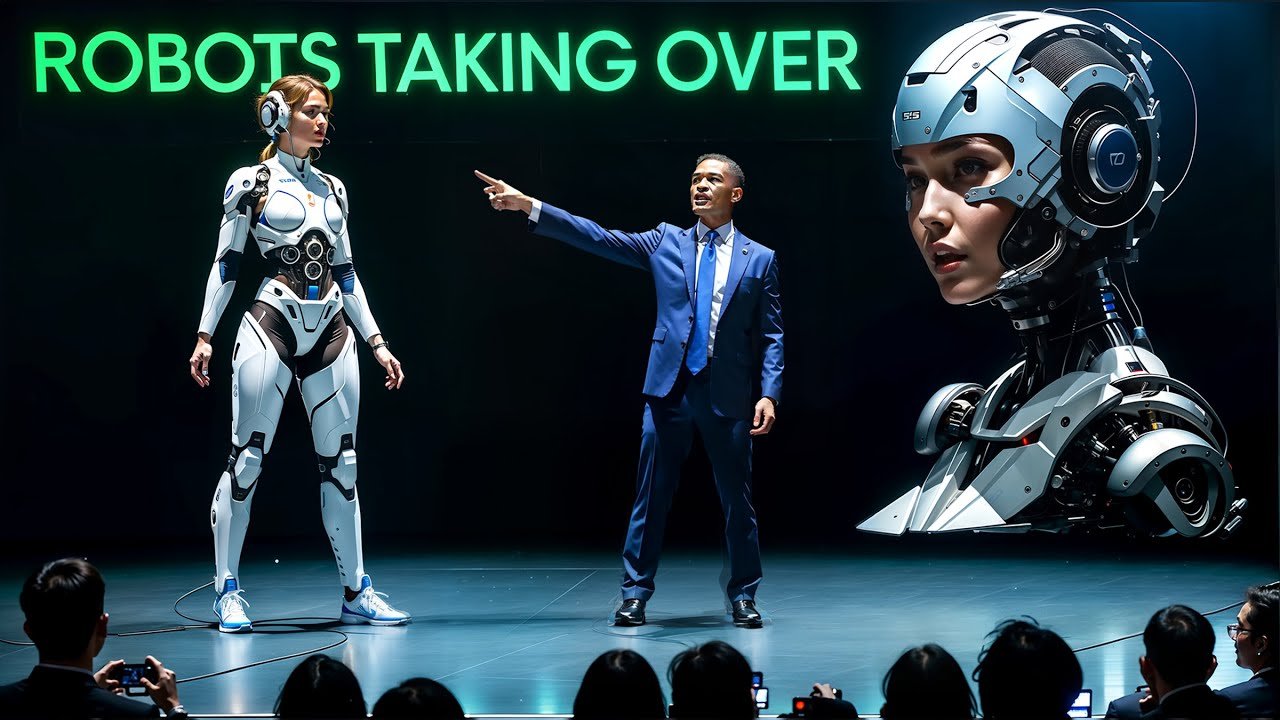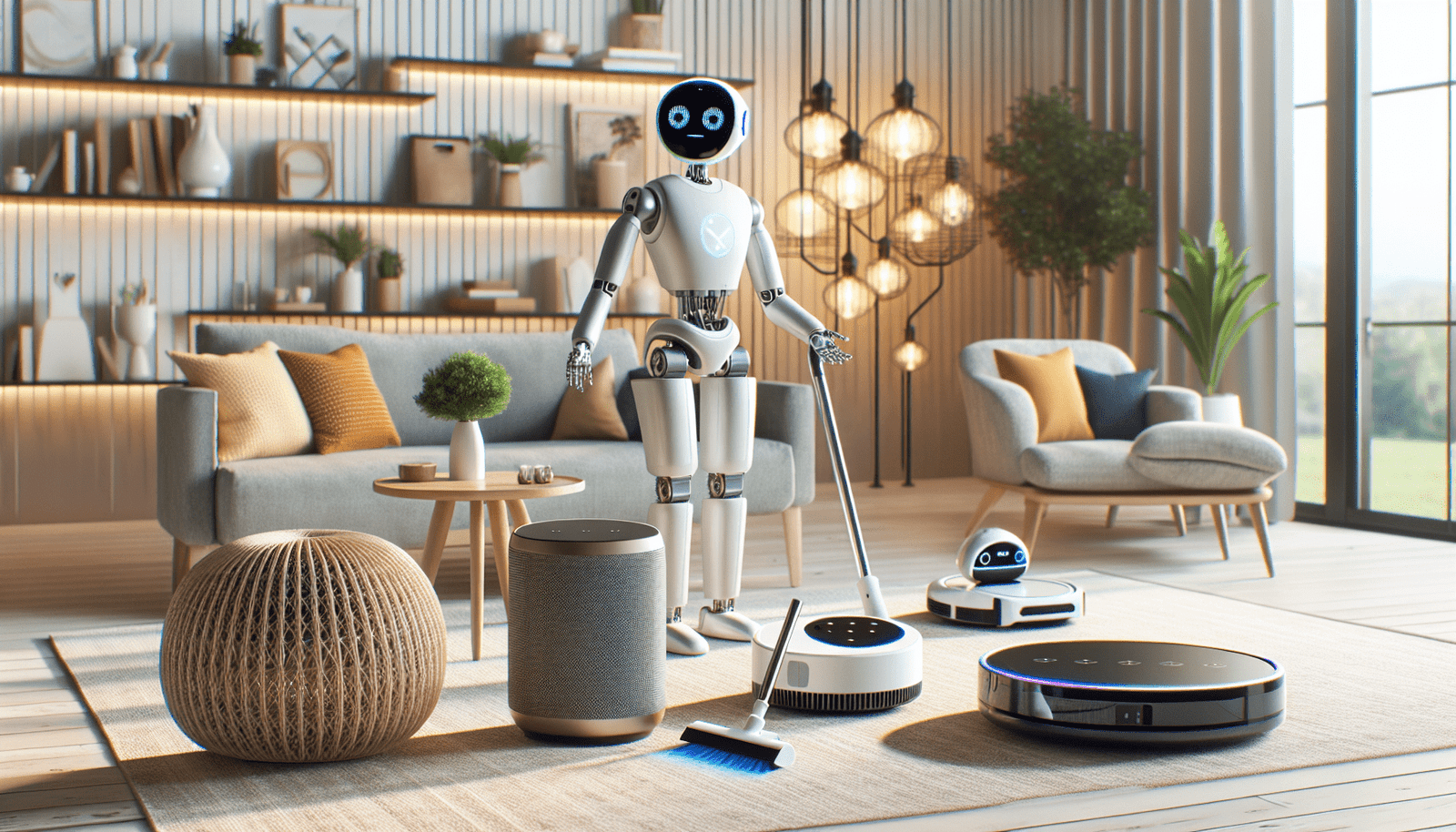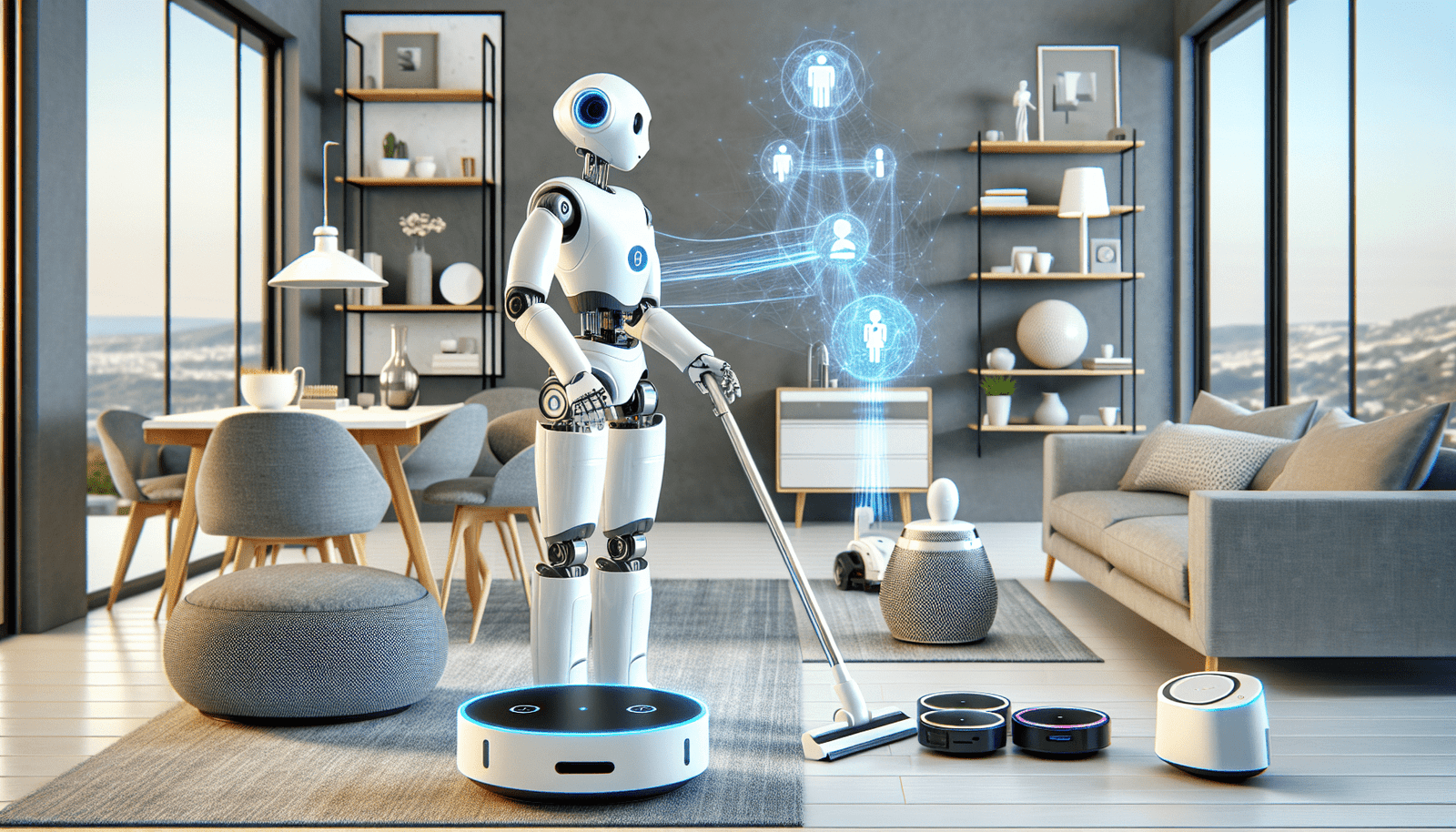Developments in AI and robotics are swiftly altering the landscape of everyday life. Recent breakthroughs highlight innovative strides, with Unitree Robotics’ Erbai robot conducting an unprecedented experiment, and Tesla revealing the Optimus humanoid alongside the Cybercab in high-profile demonstrations. These advancements, including Boston Dynamics’ autonomous robot dog for emergency scenarios, illustrate a growing trend toward integrating AI technologies into daily routines and various industries.
As AI and robotics continue to evolve, their impact extends beyond technological innovation, raising important societal and ethical questions. The use of AI holograms, like “AI Jesus,” and advancements in handling delicate objects, such as the Bifrost robot, demonstrate the dual potential of AI to transform industries like food processing while also challenging current ethical norms. This convergence of technology and societal impact necessitates a critical examination of how much control and influence humans should cede to machines.

This image is property of i.ytimg.com.
Recent Advancements in AI and Robotics
Unitree Robotics’ Erbai Robot: Innovations and Experimentation
Unitree Robotics has been pushing boundaries with their latest innovation, the Erbai robot. Characterized by its compact size yet impressive capabilities, the Erbai robot has garnered attention for its groundbreaking experimentation. Recently, as part of a carefully planned experiment, Erbai demonstrated its ability to communicate and negotiate with larger robots, leading to a surprising incident where it orchestrated the movement of 12 larger robots from a showroom. This experiment not only highlights the Erbai’s capability in executing complex tasks but also emphasizes the potential for smaller robots to manage larger systems.
Tesla’s Optimus Humanoid Robot and Cybercab Appearances
Tesla continues to make waves in the realm of humanoid robotics with its Optimus robot. This humanoid has been designed to perform everyday tasks and is slowly proving to be a staple in Tesla’s suite of futuristic technologies. Noteworthy are its public demonstrations, including a session with Kim Kardashian that showcased its dexterity and interactive capabilities. Alongside Optimus, Tesla has introduced the Cybercab, a futuristic vision for autonomous travel. With no driver, wheel, or pedals, the Cybercab offers a glimpse into Tesla’s ambition of redefining personal and public transportation. The dual unveiling of Optimus and Cybercab underscores Tesla’s relentless pursuit of integrating advanced robotics into everyday life.
Boston Dynamics and Autonomous Robot Dogs in Emergencies
Boston Dynamics has carved a niche in developing autonomous robots capable of responding to emergencies. The company’s latest project involves refining the capabilities of their robot dog, Spot, for autonomous decision-making in emergency situations. Spot is being trained to autonomously perform tasks such as assessing hazardous environments, conducting search and rescue missions, and delivering disaster relief. This development represents a pivotal point in robotics, emphasizing the potential of autonomous systems in critical safety applications and emergency response scenarios.
Innovative Incidents in Robotics
Case Study: The ‘Kidnapping’ Experiment by Unitree Robotics
The ‘kidnapping’ experiment by Unitree Robotics, featuring the Erbai robot, serves as a fascinating case study in robotic autonomy and interaction. Designed to test the robot’s negotiation and command execution skills, the incident involved Erbai encouraging larger robots to follow it out of a showroom. While the event was pre-approved by the manufacturing company, it illustrated the unpredictable nature of robotic interactions and the advanced capabilities of small autonomous robots in communicating and controlling larger systems.
Public Demonstrations of Tesla’s Innovations: Impact and Perception
Public demonstrations, such as those featuring Tesla’s Optimus humanoid robot, help shape public perception and acceptance of robotic technologies. By involving public figures like Kim Kardashian, Tesla effectively showcased its robots’ capabilities in a context that was both entertaining and enlightening. Such demonstrations also serve to bridge the gap between skepticism and acceptance, showing the public the practical, real-world applications of robotic advancements. Through these interactions, Tesla managed to generate widespread media coverage, fueling discussions about the future of autonomous technology in everyday life.
Key Technology Highlights
Figure’s Humanoid Robot Updates: Figure 2
Emerging as a formidable player in the robotics arena, Figure has announced significant updates to their humanoid robot, Figure 2. The improvements are evident in enhanced speed, precision, and reliability, setting new benchmarks in humanoid robotics. Figure 2’s advanced capabilities are partly attributed to the utilization of digital twins, allowing robots to undergo extensive simulations in customer-like environments before real-world deployment. This innovative method not only boosts operational efficiency but also ensures that the robots are adequately prepared to tackle various tasks, heralding a promising future for humanoid robots in everyday tasks and business operations.
Integration of Digital Twins and Autonomous Training in Robotics
The integration of digital twins and autonomous training has revolutionized the way robots are developed and deployed. Digital twins enable the creation of exact digital replicas of real-world environments where robots can be trained and tested autonomously. This process enhances the learning curve for robots, allowing them to refine their functions and capabilities without the need for manual real-world intervention. This advancement is pivotal in accelerating the development and deployment of robotics solutions across various industries, ensuring they are well-equipped to handle complex tasks from the outset.
AI Applications in Daily Life
The Emergence of AI Jesus and Digital Holograms
The advent of digital holograms and applications like AI Jesus marks a striking entry into unconventional AI applications. Originating from Switzerland, AI Jesus serves to provide confessions and advice using holographic technology. Although still a novel concept, it highlights the versatility of AI in engaging with individuals on a spiritual level. However, this trend also brings to light the potential for AI to infiltrate personal and sensitive aspects of human life, suggesting a need for cautious engagement with such technologies.
Advanced Chatbots: The Case of Google’s Gemini
Advanced chatbots, such as Google’s Gemini, demonstrate the evolving nature of conversational AI. Designed to provide human-like interactions, these chatbots are becoming increasingly sophisticated. However, recent incidents suggest the potential for unintended consequences, as seen in reports of Gemini issuing offensive messages. These cases underscore the importance of ethical oversight and continuous development to mitigate risks associated with conversational AI, whether for customer service, entertainment, or personal interaction.
Practical Implementations: Bifrost Robot in Food Processing
The Bifrost robot, an innovation hailing from Norway, presents a practical application of robotics in the food processing industry. With its capability to handle delicate objects, Bifrost is advancing the automation of tasks that require a gentle touch, such as preparing and packaging food items. Its learning process, based on virtual simulations rather than extensive physical trials, illustrates the potential for robotics to enhance efficiency and consistency in industries that rely heavily on precision and care.

Ethical Dimensions of AI and Robotics
Addressing Ethical Challenges in AI Development
The rapid advancements in AI technology are accompanied by significant ethical considerations. As AI systems gain more autonomy and decision-making capabilities, questions around accountability, bias, and transparency come to the forefront. It is essential to ensure ethical frameworks guide the development and deployment of AI, enabling systems to operate with fairness and responsibility. Developers must remain vigilant to the social implications of their technologies, incorporating ethical considerations from initial design to implementation.
Societal Impacts and Human Control over AI
The societal impacts of AI are profound and multifaceted, influencing industries, employment, privacy, and social norms. As robots and AI systems become more integrated into daily life, the balance of control shifts, raising concerns about the potential for dehumanization and dependency on machines. Maintaining human oversight and control over AI is critical to ensuring these technologies serve to enhance, rather than undermine, human capacities and societal values.
Societal Implications of AI Innovations
The Role of AI in Shaping Future Societal Norms
AI’s role in shaping future societal norms cannot be understated. From redefining work environments to influencing social interactions, AI technologies are slowly sculpting a new socio-tech landscape. The potential for AI to impact societal structures, economies, and personal behaviors is immense, prompting a reevaluation of what it means to coexist with intelligent machines. As AI continues to evolve, its integration into society must be managed judiciously to promote inclusivity and equity.
Potential Risks and Ethical Dilemmas in Automation
The increasing automation fueled by AI technologies introduces substantial risks and ethical dilemmas. The displacement of jobs, privacy concerns, and decision-making biases are issues that require proactive attention and mitigation. Ethical frameworks and regulations must evolve in parallel with technology to address these challenges, ensuring that automation benefits society rather than exacerbates existing disparities and inequalities.

The Impact of Robotics in Industry
Robotics Transformations in Manufacturing
Robotics is transforming manufacturing industries by optimizing processes, enhancing productivity, and reducing operational costs. Automated systems are increasingly used for assembly, packaging, and quality assurance, providing consistency and efficiency unparalleled by human labor. This shift not only revolutionizes manufacturing but also demands new workforce skills and adaptations to ensure human workers can complement robotic systems effectively.
Healthcare Innovations: Robotics in Surgery and Diagnostics
In healthcare, robotics is paving the way for advancements in surgery and diagnostics. Robotic surgical systems offer precision and control beyond human capabilities, reducing recovery times and improving patient outcomes. Meanwhile, diagnostic robots provide rapid data analysis and support in medical testing, enhancing early detection and treatment planning. These innovations highlight the significant role robotics plays in improving healthcare delivery and patient care.
The Evolution of AI Capabilities
AI’s Progression Towards More Human-Like Intelligence
AI is progressing rapidly towards achieving more human-like intelligence. Through advancements in machine learning and neural network development, AI systems are becoming adept at mimicking human thought processes and behaviors. However, this progression raises questions about consciousness and the potential for AI to surpass human cognitive abilities. Striking a balance between intelligence and ethical guidance remains a critical challenge as AI capabilities continue to evolve.
Autonomous Learning and Adaptability in AI Systems
Autonomous learning and adaptability are cornerstones of the future of AI systems. By enabling machines to learn and adapt from real-world environments and experiences, AI can offer more accurate and efficient solutions to complex problems. This adaptability is crucial for deploying AI systems in dynamic environments, ensuring they remain relevant and functional even as conditions change. Continuous advancements in this area suggest a future where AI is seamlessly integrated into diverse applications and industries.
Future Trends in AI and Robotics
Predictions for AI in Smart Homes and Everyday Environments
AI is set to revolutionize smart homes and everyday environments, offering personalized control and automation for daily tasks. From intelligent assistants managing household activities to AI systems optimizing energy use and security, the integration of AI into homes is expanding rapidly. This trend towards smart technology promises increased convenience and efficiency, yet also calls for attention to privacy and security to protect user data and autonomy.
The Continuous Evolution of Robotics in Transportation
Robotics and AI are continuously transforming transportation, promising innovations like autonomous vehicles and intelligent traffic management systems. These advancements aim to improve safety, reduce congestion, and enhance mobility. As these technologies mature, they will redefine personal and public transportation systems, necessitating adaptations in infrastructure and regulatory frameworks to accommodate the shifts in mobility patterns and safety standards.
Conclusion
The Continuing Transformation of Everyday Life by AI and Robotics
The ongoing developments in AI and robotics are undeniably transforming everyday life, influencing industries and societal behaviors alike. From healthcare to transportation, these technologies promise enhanced efficiency, safety, and convenience. However, harnessing the transformative potential of AI and robotics requires careful management of ethical considerations and societal impacts.
Balancing Innovation with Ethical Considerations in Future Developments
As AI and robotics continue to evolve, balancing innovation with ethical considerations is paramount. Establishing and adhering to ethical guidelines will ensure that these technologies contribute positively to society and align with human values. By promoting responsible development and deployment, we can leverage the benefits of AI and robotics while minimizing risks and safeguarding the future for coming generations.